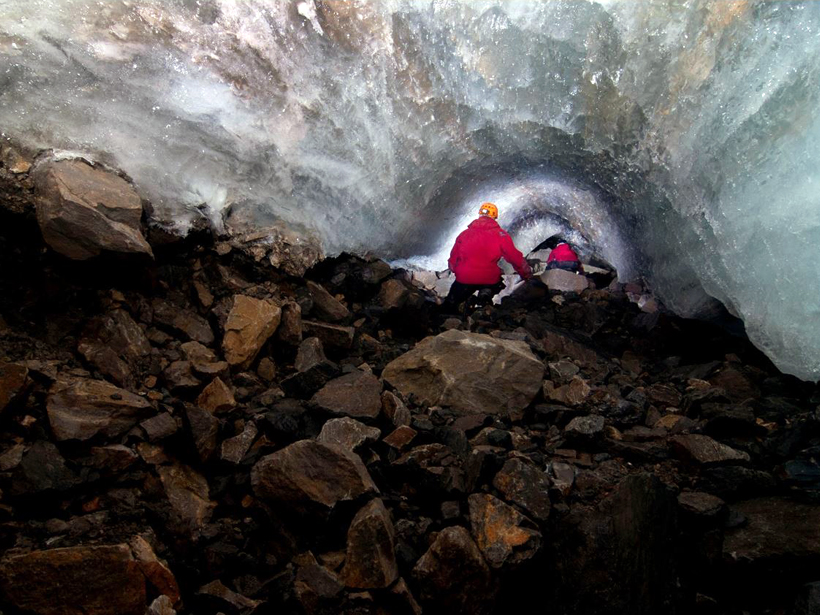Source: Geophysical Research Letters
The bottoms of glaciers are riddled with conduits that drain meltwater and form hidden lakes and rivers. Scientists know these subglacial tunnels affect the speed at which glaciers slide, but the process is poorly understood because the channels are so hard to access. Now the first study of a real conduit beneath a glacier in Svalbard, Norway, reveals that the friction exerted on the water within the channel is orders of magnitude higher than previously thought.
Subglacial conduits affect the speed at which ice sheets slide in complex ways, including increasing the resistance of the surface glaciers travel over and lubricating their flow with water. Computer models need high-resolution data on a channel’s roughness, width, and curvature to accurately simulate these dynamics, but such data usually aren’t available because conduits are buried under thick slabs of ice.
To address that gap, Chen et al. mapped out a section of a real conduit beneath Hansbreen glacier in the ice archipelago of Svalbard. The conduit has an accessible outlet, so the researchers could climb inside and take photographs. They used them to build a 3-D computer model of its interior, including a 10-meter section of the conduit at millimeter-scale resolution and a less detailed, 125-meter-long section.
The Hansbreen conduit travels through a jumble of sharp rocks, widens and narrows, and makes several turns, a measure known as sinuosity. Using their detailed, 3-D model of the channel, the researchers ran computer simulations of the friction between the conduit and water flowing within it and found it was 1 to 2 orders of magnitude higher than estimates typically used in such studies.
In the past, researchers calculating how much resistance such conduits present to the water flowing through them have focused on the channels’ surface roughness, paying little attention to changes in conduit sinuosity or variations in width. But these neglected factors were far more important than roughness in generating resistance, the team found.
Together, the variations in channel width and sinuosity contributed 94% of the total friction between the water and conduit. The findings suggest that future glaciology models must account for how subglacial channels widen, narrow, and meander if they are to accurately predict how ice sheets slide and melt. (Geophysical Research Letters, https://doi.org/10.1029/2018GL079590, 2018)
—Emily Underwood, Freelance Writer
Citation:
Underwood, E. (2019), Mapping subglacial meltwater channels, Eos, 100, https://doi.org/10.1029/2019EO124319. Published on 28 May 2019.
Text © 2019. The authors. CC BY-NC-ND 3.0
Except where otherwise noted, images are subject to copyright. Any reuse without express permission from the copyright owner is prohibited.

